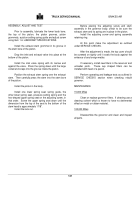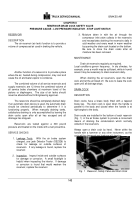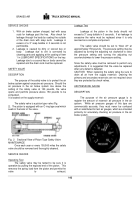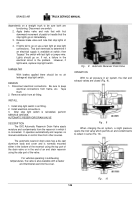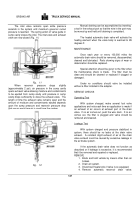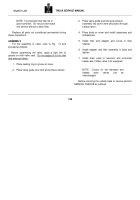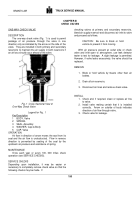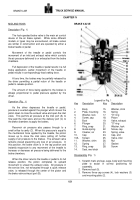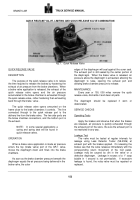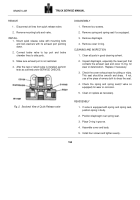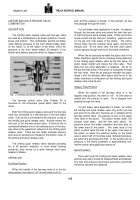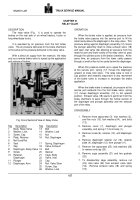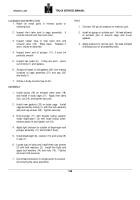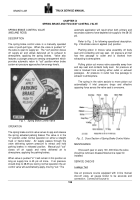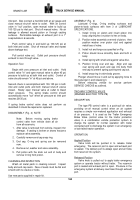TM-5-3805-254-14-P-2 - Page 153 of 894
TRUCK SERVICE MANUAL
CHAPTER IV
MIDLAND ROSS
Description (Fig.
1)
The foot-operated brake valve is the main air control
device of the air brake system.
While some different
models or types may be encountered, all brake valves
are similar in construction and are operated by either a
brake treadle or pedal.
Movement of the treadle or pedal controls the
movement of an inlet and exhaust valve which controls
the air pressure delivered to or exhausted from the brake
chambers.
Full depression of the treadle or pedal results in a full
brake application, partial movement of the treadle or
pedal results in correspondingly less braking force.
At any time, the brakes may be partially released by
the driver permitting a partial return of the treadle or
pedal to release position.
The amount of force being applied to the brakes is
always proportional to pedal pressure applied by the
driver.
Operation (Fig.
1)
As the driver depresses the treadle or pedal,
pressure is exerted against the plunger which moves the
piston down to close the exhaust valve and open the inlet
valve.
This permits air pressure at the inlet port (A) to
flow past the inlet valve and out the delivery port (C) to
the brake chambers to apply the brakes.
Reservoir air pressure also passes through to a
small orifice to cavity (C).
When this pressure is equal to
the mechanical force applied by the treadle, the piston
moves up to close the inlet valve cutting off further
supply of air pressure to the brakes.
The exhaust valve
remains closed preventing any loss of air pressure.
In
this position, the brake valve is in the lap position and
instantly responsive to any movement of the treadle to
increase or decrease air pressure being delivered to the
brake chambers.
When the driver returns the treadle or pedal to its full
release position, the piston completes its upward
movement to unseat the exhaust valve.
All pressure in
the service line, not exhausted through a quick release
valve, is released through the center of the piston and
the brake valve exhaust port (B).
BRAKE VALVE
Legend for Fig. 1
Key
Description
Key
Description
1.
Body
15.
Washer, shim
2.
Plate, mounting
16.
Spring
3.
Washer, lock
17.
"O"-ring
4.
Screw, cap
18.
Piston
5.
Boot
19.
Valve, exhaust
6.
Plunger
20.
"O"-ring
7.
Ring, snap
21.
Washer, lock
8.
Guide spring
22.
Screw, cap
9.
Cleaner, air
23.
Spring, valve
10.
Cap
24.
Cap, end
10A.
Screen
25.
Valve, inlet
11.
Washer, shim
26.
Nut
12.
Spring
27.
Gasket
13.
Ring, snap
28.
Screw
14.
Seal, vee-block
Disassembly (Fig.
1)
1. Scratch mark end cap, cage, body and mounting
plate to assist in correct positioning for
assembly.
2. Remove boot (5).
3. Remove three cap screws (4), lock washers (3)
and mounting plate (2).
151
BRAKES-AIR
Back to Top

